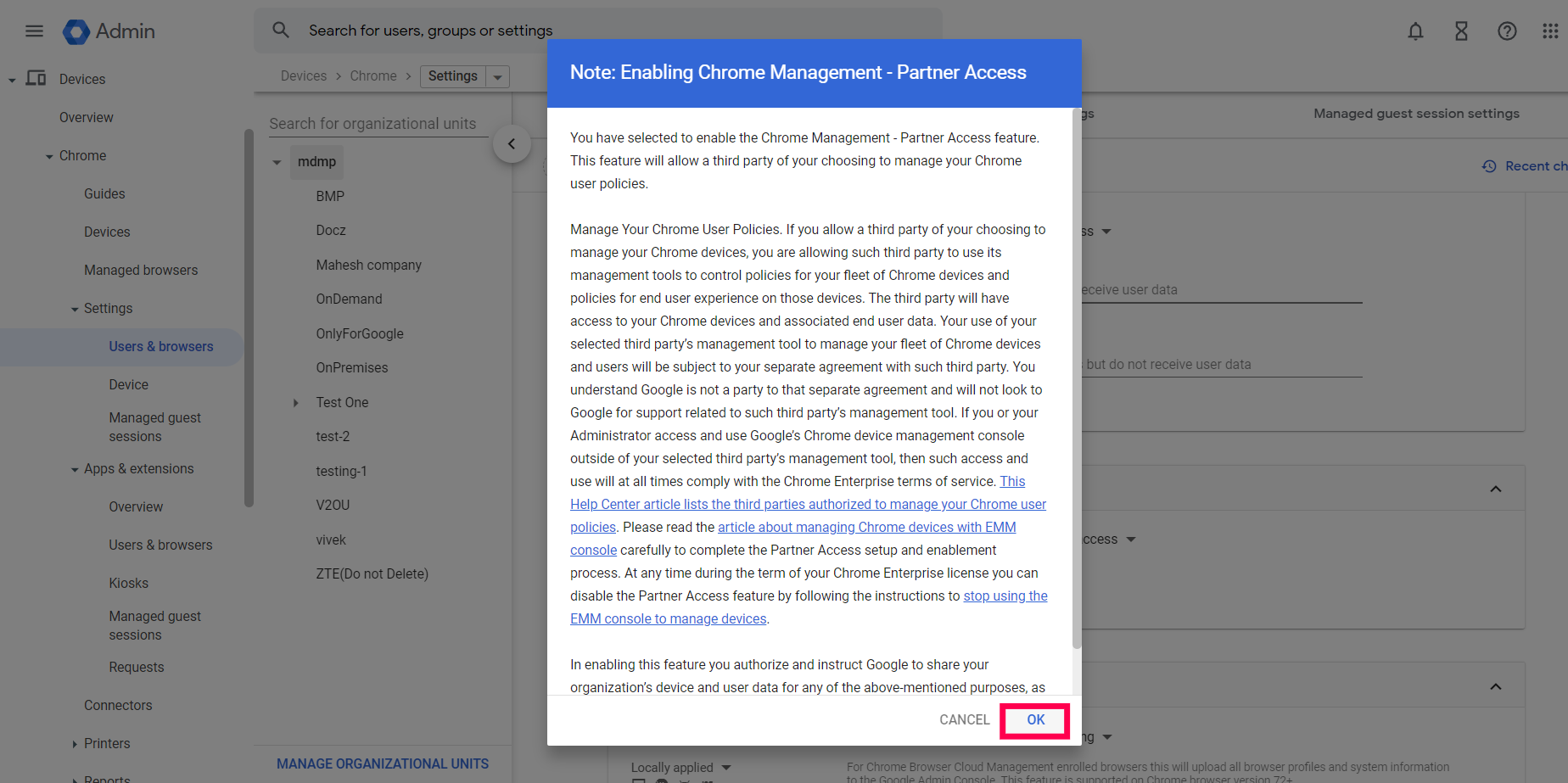

Only you know what is appropriate for your deployment.Įach setting discussed may be applied in a hierarchical organizational unit structure. These types of settings are not discussed, and the reader is advised to investigate each setting to determine how it affects their organization. For instance, allowing the ability to change background wallpapers may be relevant to some and inconsequential to others. Not all settings will apply to every environment. This should not be considered an exhaustive list, as available settings and options are ever-evolving. You will be guided through many interesting settings, but it is highly recommended to read through each available configuration option and determine how it pertains to your organization.
#GOOGLE CHROME OS MANAGEMENT CONSOLE UPGRADE#
This blog only includes those Google Chrome Enterprise Upgrade settings that are both relevant to security or privacy and also have default values which might warrant consideration. This first blog will go over the application and user settings that you may want to investigate. It contains four sections of settings that control application settings, user settings, device settings and privacy settings. This blog, delivered as a two-part series, will seek to help administrators by giving an overview of the Google Chrome OS policy settings which can be configured in the Google admin panel. Some administrators may feel overwhelmed by the myriad of configuration options available, however. Chrome Enterprise mobile device management allows for the definition and enforcement of security controls plus user and device orchestration-all from a centralized cloud administration panel. The Google Chrome Enterprise Upgrade unlocks the management capabilities that are innate in the cloud-native Chrome OS operating system.

Chrome OS devices are versatile enough to perform most business and educational tasks while being an inexpensive way to add new devices where previously none might have existed. One appealing solution for managing all these new remote users is to use Google Chromebooks.
#GOOGLE CHROME OS MANAGEMENT CONSOLE HOW TO#
One significant hurdle for those who are suddenly tasked with supporting remote users is the question of how to manage a fleet of new endpoints. Many organizations, from enterprises to small businesses and schools, are focusing efforts on distance working and learning.


 0 kommentar(er)
0 kommentar(er)
